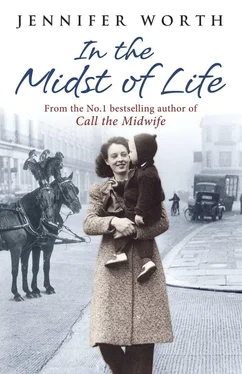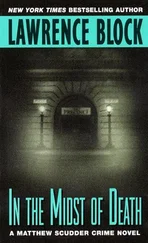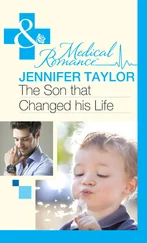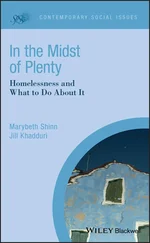Jennifer Worth - In the Midst of Life
Здесь есть возможность читать онлайн «Jennifer Worth - In the Midst of Life» весь текст электронной книги совершенно бесплатно (целиком полную версию без сокращений). В некоторых случаях можно слушать аудио, скачать через торрент в формате fb2 и присутствует краткое содержание. Жанр: Биографии и Мемуары, на английском языке. Описание произведения, (предисловие) а так же отзывы посетителей доступны на портале библиотеки ЛибКат.
- Название:In the Midst of Life
- Автор:
- Жанр:
- Год:неизвестен
- ISBN:нет данных
- Рейтинг книги:3 / 5. Голосов: 1
-
Избранное:Добавить в избранное
- Отзывы:
-
Ваша оценка:
- 60
- 1
- 2
- 3
- 4
- 5
In the Midst of Life: краткое содержание, описание и аннотация
Предлагаем к чтению аннотацию, описание, краткое содержание или предисловие (зависит от того, что написал сам автор книги «In the Midst of Life»). Если вы не нашли необходимую информацию о книге — напишите в комментариях, мы постараемся отыскать её.
In the Midst of Life — читать онлайн бесплатно полную книгу (весь текст) целиком
Ниже представлен текст книги, разбитый по страницам. Система сохранения места последней прочитанной страницы, позволяет с удобством читать онлайн бесплатно книгу «In the Midst of Life», без необходимости каждый раз заново искать на чём Вы остановились. Поставьте закладку, и сможете в любой момент перейти на страницу, на которой закончили чтение.
Интервал:
Закладка:
The hospice remained, but she was persecuted by the locals. The Ku Klux Klan burned crosses on her lawn, and terrorised her helpers; bullets were shot through her windows and her car was repeatedly sabotaged. She was a woman of spirit, and virtually fearless, but she was getting older, running out of fire, energy and health, and a year later the hospice for AIDS babies was closed. However, not defeated, she marshalled her considerable resources to try to find other people who would adopt or foster the babies. The word spread and soon hundreds of AIDS babies were adopted by loving families who welcomed these unfortunate children. The work continues.
In 1995 Elisabeth suffered the first of a series of small strokes. Undeterred she pressed on with life, overcoming the physical difficulties with characteristic resourcefulness. She always said, ‘I am ready to die,’ and when, in 2004, a massive stroke occurred I feel sure she was happy to be released from the earthly life to which she had given so much.
DAME CICELY SAUNDERS
(1918-2005)
If I were asked to nominate one woman as the genius of the last century, I would say Dame Cicely Saunders. At the age of twenty she started nursing at St Thomas’s Hospital in London, where she was horrified by the neglect of patients who were dying. Many times she heard doctors say, ‘There is nothing more we can do,’ and watched them walk away. She saw cancer patients with constant, intractable pain screaming for pain killers and being denied them for the specious reason that ‘the effect of the drug will wear off as the body gets used to it and increased doses will be required, and we will be creating drug addicts’. Ten years later, in the early 1950s, I also witnessed this sort of attitude. Doctors were trained in diagnosis and active treatment. If cure was not possible, the medical approach was, ‘There is nothing more to be done.’
Four years into her career, Cicely Saunders injured her back and had to leave nursing, so she trained as an almoner – what we would now call a medical social worker. During this time she saw another side to dying – family involvement, or lack of it, and the effect this had on the dying person. She saw that loneliness, or the feeling of rejection, causes a spiritual pain, which can be as bad, or worse, than the physical pain.
Cicely Saunders was a deeply religious girl and faith in a loving God was the core of her life. Religious conviction is comparatively rare, and a ‘calling’ even more so. Dimly at first, but inexorably, she felt that she was being called by God to work with the dying, and to lead others in the same path. Prayer and meditation led her to examine the work of the Catholic Order of the Irish Sisters of Charity at St Joseph’s Hospice for the Dying in Hackney, London. She worked with them as a volunteer, whilst continuing her paid work as an almoner.
At St Joseph’s she saw that, as a patient drew near to the terminal stage of an illness, far from there being ‘nothing more we can do,’ there was a great deal more to be done: bring comfort in relaxed surroundings, look after the physical, emotional and spiritual well-being of the patient, give medical care if possible, but if not, meticulous nursing in the last stages of life. However, she saw that the nuns were just as hampered as hospital nurses in giving pain relief for cancer patients, because the medical staff had control of drugs.
During the next six years her vision developed and she realised that the medical profession must change, not just in its attitude to pain relief, but also in the wider context of recognising the needs of a dying patient as an essential part of the physician’s work. What an awesome task for a young girl in her twenties – to change the medical profession! She was ‘only’ a nurse and a social worker. What could she do? A calling from God is always hard and demanding, but it can never be resisted, whatever the cost to the individual.
None of us lives or works in isolation, and Cicely was constantly talking to like-minded people; what emerged was the advice that she should train to be a doctor. She did not have the scientific background required, but intensive study got her up to standard, and, at the age of thirty-two, she was accepted by St Thomas’s Medical School in London. Six years later, in 1952, she qualified. She was nearly forty, and had travelled a long road from student nurse to qualified doctor. But a longer, more difficult road lay ahead.
Cicely Saunders was the first doctor to devote her entire professional career to the care of the dying. Many have since followed, inspired by her example and teaching. Her inspiration is with us still, and widening all the time in the hospice movement that she created, and that became international in scope.
As a newly qualified doctor she was determined that her first task must be research into the control of pain. The medical director and the nuns of St Joseph’s Hospice gave her the facilities to test her theory that pain in cancer could be fully controlled by the regular, four-hourly use of analgesics. The idea was revolutionary at the time and, by the 1960s, she had proved, beyond a shadow of doubt, that drugs given in this way did not create zombie-like drug addicts, that the dose did not have to be increased to maintain effectiveness, in fact it could sometimes be decreased, and that patients became calm, comfortable and, in every way, happier because the pain had gone.
Sixty years ago, only about four per cent of cancer patients survived; today, around forty-eight per cent can be cured. Pain is nearly always part of the disease, and we take it for granted that pain can be controlled. But it took a nurse-turned-doctor to prove the fact – and point the way for others to follow.
I remember so clearly a woman I nursed at the Royal Berkshire Hospital in 1953. She had a sarcoma, an aggressive type of cancer. The seat of the cancer was probably in her ovaries, but it had spread to her bones and she was in the orthopaedic ward because one of her legs was broken. It was altogether the wrong ward for her, because most orthopaedic patients are relatively young and feel quite well, but this lady was dying. Whilst they hobbled around on their crutches she lay in bed, unable to move. One could see that she was trying to hide the pain, but every so often sweat would break out on her forehead and she would bite the sheets and grip her hands so tight the knuckles became white. Through clenched teeth she would articulate in a strangled voice:
‘Can’t you give me something, Nurse – another injection? I can’t stand much more.’
Ward sister would say something like:
‘Not just yet, dear, it’s too soon after the last dose. Try to hang on till the night nurses come on duty. Then you can have an injection for the night.’
In speechless agony she would nod, her eyes frantic with fear and suffering, then say: ‘I’ll try, Sister, I’ll try. How long must I wait?’
‘Only another couple of hours, dear. I tell you what; I can give you a couple of codeine. That will ease things until you have your injection.’
The ward sister was not being stupid or callous; this was no better and no worse than the norm. It was accepted practice.
When I was a ward sister in 1963, at the Marie Curie Hospital in Hampstead, this would never occur. We gave analgesics, four hourly, day and night, and every dose was different, tailored to individual needs and the patient’s level of pain. Dr Saunders’ studies had been so successful, and her teaching disseminated so widely, that uncontrolled pain had become a memory.
Dr Saunders did not rest on her laurels, however. Great souls never do; there is always more to be accomplished. She felt that her calling was to create a hospice that would be a working/ teaching model for the medical profession. This imaginative approach would not only ensure pain relief and meticulous nursing, but also maintain a patient’s self-respect and dignity, enhancing the remaining period of that person’s life, however short it might be.
Читать дальшеИнтервал:
Закладка:
Похожие книги на «In the Midst of Life»
Представляем Вашему вниманию похожие книги на «In the Midst of Life» списком для выбора. Мы отобрали схожую по названию и смыслу литературу в надежде предоставить читателям больше вариантов отыскать новые, интересные, ещё непрочитанные произведения.
Обсуждение, отзывы о книге «In the Midst of Life» и просто собственные мнения читателей. Оставьте ваши комментарии, напишите, что Вы думаете о произведении, его смысле или главных героях. Укажите что конкретно понравилось, а что нет, и почему Вы так считаете.












